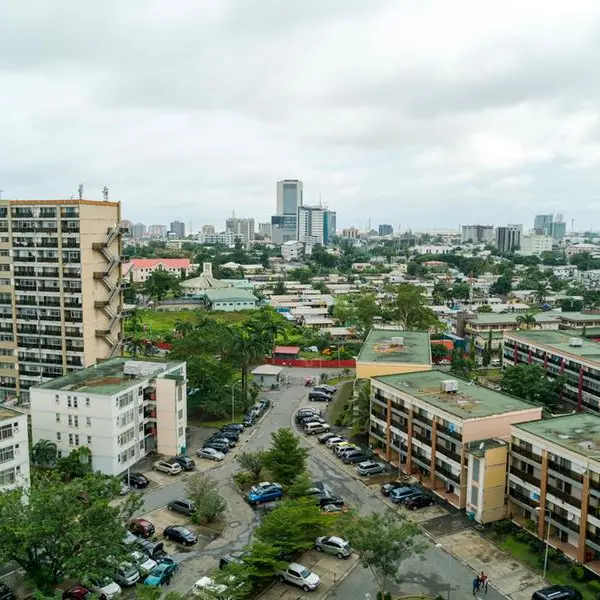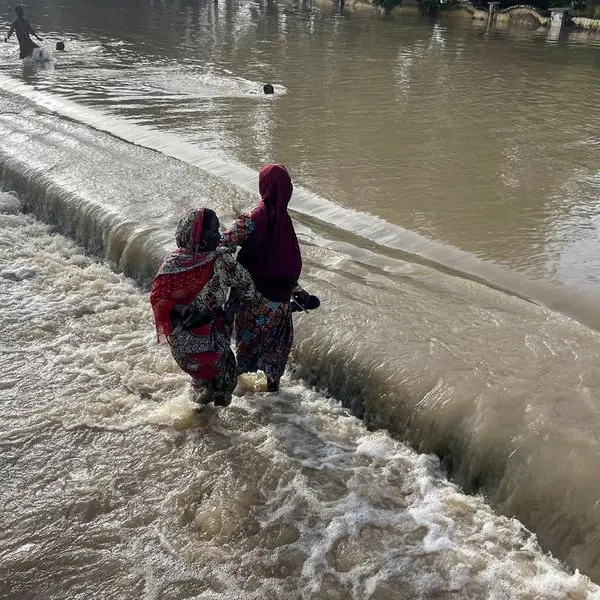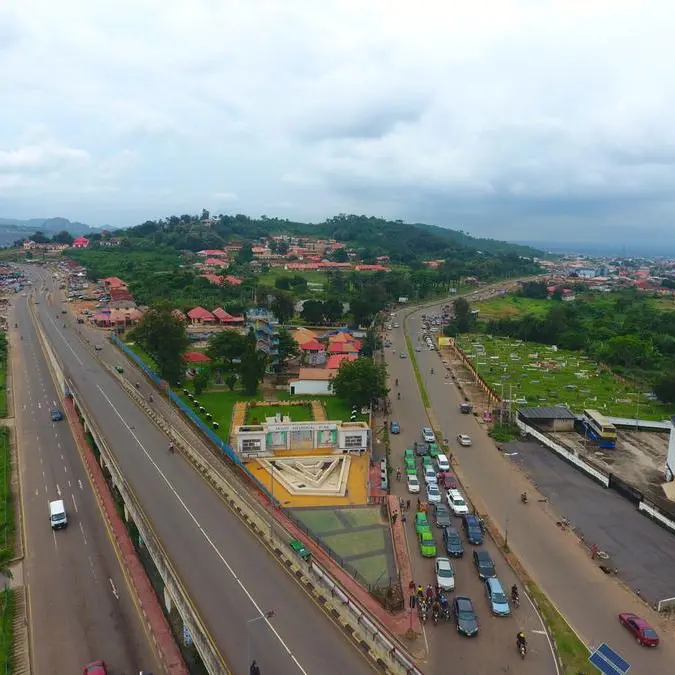PHOTO
Africa’s loans in default climbed to a record $149.4 billion in 2022, the highest in three decades, as the rising cost of borrowing contributed to delayed repayments.
Many countries on the continent have found themselves in debt crises largely triggered by the Covid-19 pandemic, Russia's invasion of Ukraine and a global wave of interest rate hikes to fight inflation.
The latest study by the African Export-Import Bank (Afreximbank) reveals that East Africa tops the list of the continent's most indebted regions, with Kenya and Tanzania among the highest sovereign loan defaulters.
The East African economies had a relatively high debt-to-gross domestic product (GDP) ratio of 54.5 percent over the seven-year period (2017-2023), while those in Central Africa recorded the lowest average of 35.4 percent in the same period. West African economies were ranked second, while North Africa and South Africa were ranked third and fourth, respectively.
The report, entitled State of Play of Debt Burden in Africa 2024: Dynamics and mounting vulnerability, shows that the amount of impaired loans procured by African countries increased from $112.2 billion and $100.2 billion in 2021 and 2020 respectively to $149.4 billion in 2022.
These defaults have not only triggered financial crises but have also led to years of divestment and a decline in investor confidence in the continent, according to the report, which shows that the debt sustainability of African sovereigns has deteriorated significantly and that more than half of the 52 countries assessed are either at high risk or already in debt distress.
“The sharp increase in sovereign default is attributed to the formidable global macroeconomic environment, characterised by intersecting crises that continually exert pressure on fiscal revenues,” the report says.
“The concern is the risk of a potential 'domino effect' that might sweep through other distressed sovereigns, particularly from 2024 onward when significant capital repayments are due on numerous international bonds.”
However, 2023 saw a trend reversal with the region’s loan defaults declining by 13 percent to reach $129.9 billion, as many distressed sovereigns started to voluntarily restructure their debt in innovative, transparent, and credible ways, according to the study.
Africa’s debt burden has grown significantly in the past 15 years, with the aggregated debt-to-GDP ratio of the continent surging by 39.3 percentage points between 2008 and 2020 since the 2008 financial crisis, and thereafter declining to 68.6 percent of GDP in 2023.
The debt burden inched up further between 2022 and 2023 by 1.3 percentage points.
According to the report, “other official creditors” (29.4 percent), “foreign currency bonds” (16.8 percent), and the “Paris Club” (22.6 percent) were the primary contributors, accounting for about 69 percent of the region’s loan defaults in 2022.
The report shows that Tanzania defaulted on $1.3 billion owed to "other official creditors" and $4.5 billion owed to "other private creditors", while Kenya defaulted on $305 million owed to "other private creditors".
The report explains that "other official creditors" are mainly bilateral and multilateral creditors that are not separately identified, while "other private creditors" are mainly suppliers.“Tanzania and Zimbabwe dominate the default landscape concerning other private creditors,” says the report.
The large contribution of other official creditors to Africa’s overall loan default in 2022 reflected hefty defaults by several countries, including Sudan ($ 21.02 billion), Zimbabwe ($ 8.2 billion), Libya ($ 3.2 billion), Zambia ($ 2.04 billion) and Tanzania ($ 1.3 billion).
Defaults on foreign currency bonds were driven by significant defaults by Ghana ($ 27.1 billion), Zambia ($ 3.5 billion), and Mozambique ($ 1.4 billion).
Likewise, the default on the Paris Club loan was occasioned by a large default by Sudan ($ 22.1 billion), Zimbabwe ($ 3.7 billion), Somalia ($ 1.6 billion), Ghana ($ 1.4 billion) and Zambia ($ 1.3 billion).“Moreover, 'other private creditors' and 'local currency (LC) debt' contributed significantly to the region’s loan defaults, accounting for about 18.7 percent in 2023,” the report says.
Defaults to China, constituting 3.8 percent of Africa’s loan defaults in 2022, saw a decline from $ 8.8 billion in 2021 to $ 5.3 billion in 2022, attributed to China’s cancellation of 23 interest-free loans to 17 African countriesIn 2023, Zambia and Ghana emerged as the main defaulters, featuring prominently in defaults to China and foreign currency bonds.“Suspicions have lingered since 2016 that at least six African countries, including Kenya, Ethiopia, Djibouti, Mozambique, Zambia, and Ghana, have defaulted on Chinese loans,” the report says.
By contrast, only Mozambique (2017), Zambia (2020) and Ghana (2023) have defaulted on their Eurobond coupon payments over the same period, with African countries with significant exposure to Chinese loans, notably Angola and Kenya, leading the way in bilateral debt treatment.
Last year, Ghana stood out as the biggest defaulter of local currency debt, as the country owed bondholders more than $4 billion by May 2027, part of its $13 billion dollar-denominated international bonds.
Sudan and Zimbabwe are the main defaulters to Paris Club creditors, while also driving defaults in the other official creditors category.
Africa’s external debt is highly concentrated among few countries: about 67 percent of the continent’s total external debt stock is borne by 10 African countries, including Egypt (14.5 percent), South Africa (14.3 percent), Nigeria (8.4 percent), Morocco (5.9 percent) and Mozambique (5.5 percent).
Others are Angola (5.3 percent), Kenya (3.7 percent), Tunisia (3.4 percent), Sudan (3.1 percent), and Ghana (3.0 percent), respectively.
According to the report, African countries have seen a significant increase in their external debt since 2008, reaching $1.2 trillion and accounting for almost 60 percent of the region's total public debt stock in 2023.
The growing share of external debt has increased risks to debt sustainability and the ability to service debt in real terms.
Over the past decade, there has been a notable shift in the composition of Africa's creditor base away from traditional Paris Club sources towards commercial and non-Paris Club creditors, reflecting changes in the dynamics of global finance and highlighting the increasing role of diverse creditors in the continent's debt landscape, and also reflecting the flexibility of private lending despite the relatively higher cost.
Accordingly, private debt as a share of the continent's GDP increased from 18.8 percent in 2008 to 41.6 percent in 2023.
In 2023, private debt accounted for more than half of Africa's external debt, specifically 54.3 percent of total debt, surpassing the contributions of bilateral and multilateral creditors, which accounted for 18.7 percent and 27.1 percent, respectively.
© Copyright 2022 Nation Media Group. All Rights Reserved. Provided by SyndiGate Media Inc. (Syndigate.info).























